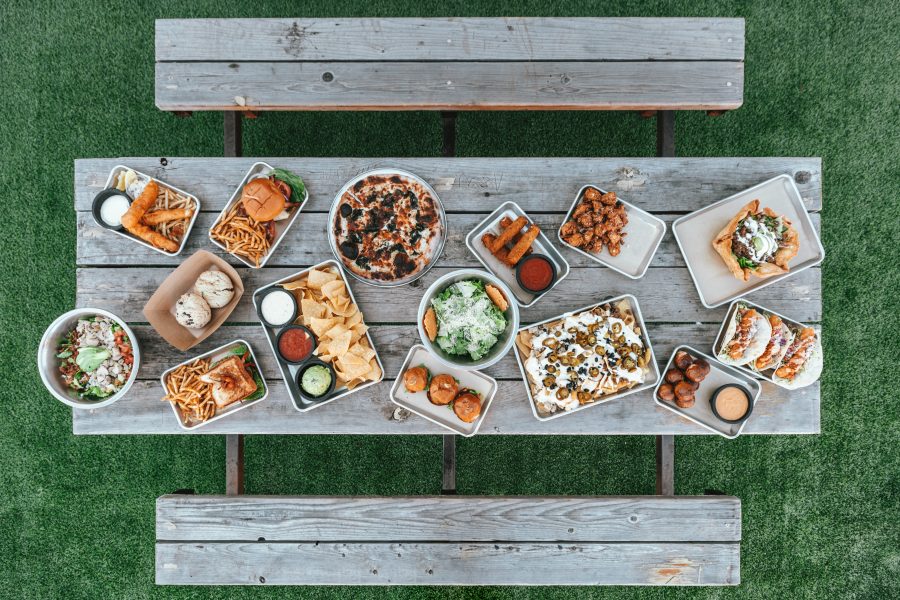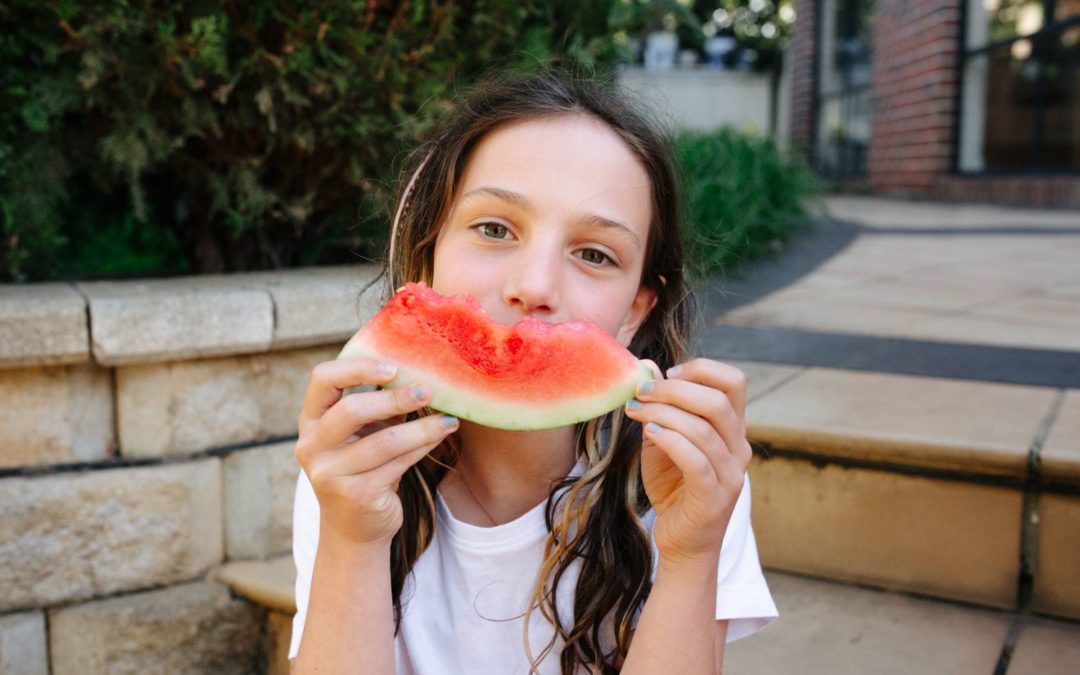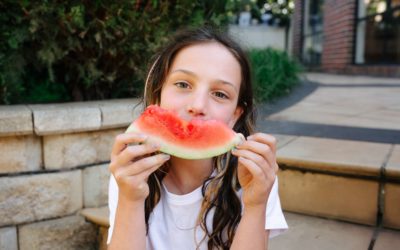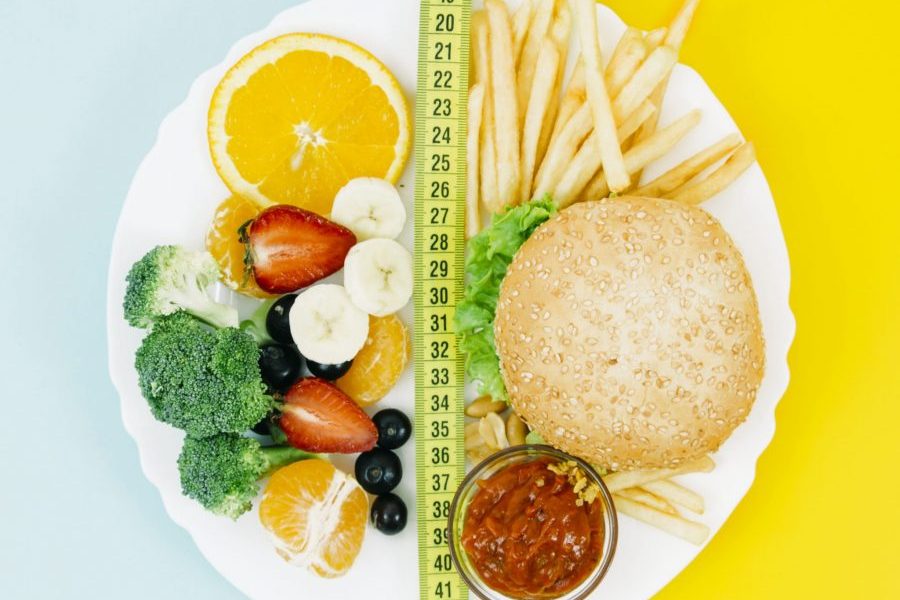We want our kids to eat and enjoy their dinner, right? And just eat their darn veggies without complaints (and eat them without us begging them all the time). We want to raise adventurous and colourful eaters.
Here are some language swaps to make at the dining table to help create a more positive and relaxed space; a space that children can learn to like their veggies without pressure or food fights.
Language swap 1
OUT: “Finish everything on your Plate”
IN: “Is your tummy feeling full?”
This great language swap is all about encouraging our children to have control about how much to eat by listening to their bodies. Trust your child to trust their bodies.
Language swap 2
OUT: “You don’t like broccoli”
IN: “Don’t worry, you just need to try broccoli a few more times, you’ll learn to like it soon!”
This one is more than a food swap, it’s a change in mindset for us parents and educators. We have all thought and said to our child they don’t like something, right? This may often turn into us as parents to stop offering this food to our child (but then they don’t get the opportunity to learn to like it).
Let’s all start to believe they just don’t like it YET, they can learn to like it, that they will learn to like it in time. Stay calm and remember expectations rule outcomes. Lets be positive and continue to teach our kids about food.
Language swap 3
OUT: “Come on, pleeeeease just try your corn”
IN: (Take a bite of your own piece of corn and say) “mmm … this corn is so sweet today”
Lets talk about pressuring our kids to eat everything on their plate or even trying something – it doesn’t work. Agree? Lets stop with the pressure and just sit, eat together and enjoy each others company at the table.
One of the most powerful ways to teach our kids how to eat (or anything else for that matter) is to role model how you want them to eat and enjoy food one day.
What sort of things to talk about? Try talking about your senses…is it crunchy? Is it sweet? Is it hard? Is it soft? What colour is it? What does it smell like? What does it feel like to touch?
To clarify – by saying “this corn is sweet or this carrot is crunchy” is not with the intention to convince your child to eat (or it will seem fake and probably count as pressure). It’s just talking about your senses’ experiences and having a nice, relaxed family mealtime.
Language swap 4
OUT: Eat your veggies or you don’t get dessert”
IN: Say nothing
This is one of my favourite food language swaps. Forget bribing your kids to eat or even over praising them. Bribing with dessert sets up that dinner is something you don’t like, something you have to endure (and keep eating even if have had enough) to get to the amazing dessert! There are a few points here.
Firstly haven’t you been in the situation where you’ve had enough dinner but still have a little room for dessert? Would you like it if the waiter said “you can’t have dessert unless you finish everything?” That’s not his place to say, right?
Secondly food is not good or bad. Food is just food. And we want our kids to have a positive relationship with food (and not feel good or bad about it).
Lastly I love that this food swap is to say nothing. We don’t always have to talk about food at the table. Just talk, about your day! About the weather. Try not worry so much about the food. Concentrate on creating a nice eating environment not on the amount of food being eaten. Happy eating!
Language swap 5
OUT: “What would you like for afternoon tea?”
IN: “Would you like a banana, carrot sticks or strawberries for you snack?”
Have you heard of the great phrase ‘parents provide kids decide‘? This is about shared responsibility when it comes to food. Parents lay out the choices and then that’s it. Let the kids choose if, what and how much food they feel like. Make sure to have a ‘safe’ food in the mix, so that your child happily eats something. This might be bread at the dinner table or crackers with the veggies and dip or a fruit or veg your child is comfortable with. Shared responsibility in food.
What would be your child’s safe food? Mine definitely love their carbs! Bread, pasta and crackers but also cucumber and carrots and apples are always well received.
Language swap 6
OUT: “Pleeeeeease eat some vegetables”
IN: “Tell me something that happened today that made you smile?”
The last one in the series and possibly my favourite! Let’s not beg, bribe and pressure our kids to eat, try or even have the food on their plate (which is stressful for everyone!). Let’s try taking the focus completely away from the food. “What is something that made you smile today?” “Did you do anything helpful for someone today?”
Note: Pressure cooker free zone!

This on is a follow up of language swap 3 about pressure. It’s important that the dinner table (and actually any time around food) is a pressure free zone! Please don’t pressure your kids to eat or even try foods, it is not good for their food anxiety and long term relationship with food. I know it is hard if they help you cook or shop and then won’t try what you made or bought. But let me tell you that them being involved (or even just watching you cook or eat if they don’t want to be involved) is teaching them. Children need time to learn about eating and build familiarity to try foods. Pressuring them to try or eat will undo that nice food experience.
So let’s stop worrying about how much and what your kid eats. Forget pressuring them to try food and trust them to engage, try or eat new foods when they are ready. Relax and remember their food experiences in calm and positive environments is what matters!










